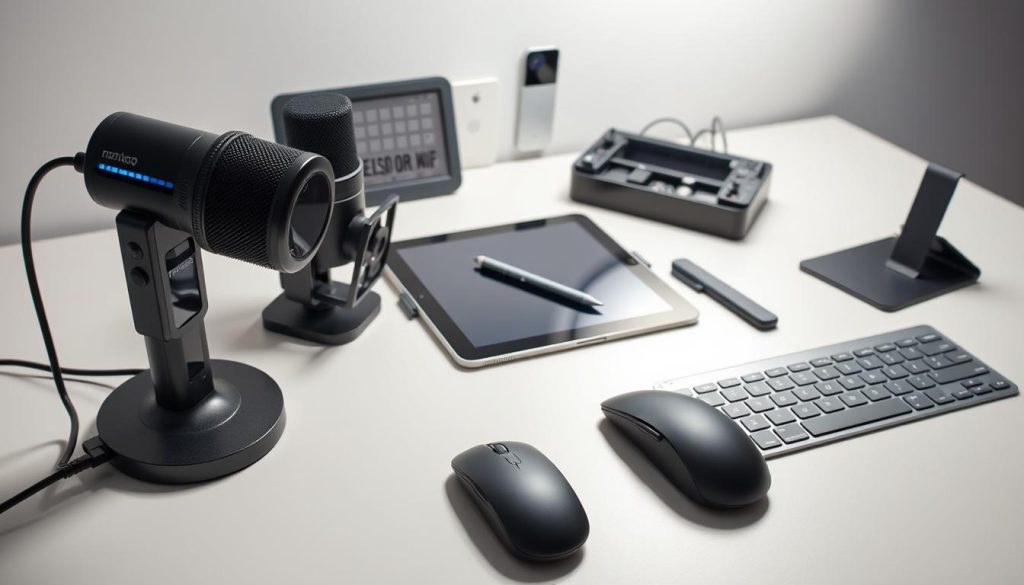Working solo in France today means your reputation travels ahead of you. Every proposal, kickoff, and deliverable depends on clear words and steady follow-through with clients.
This article turns proven habits into steps you can try this week. Learn active listening, crisp writing, and transparent workflows with tools like Asana and Trello. Small routines — double-checking messages, sending brief status updates, and pausing before you speak — cut confusion and speed approvals.
Think of communication not as one ability but a set of behaviors: tone, timing, medium choice, and listening. Practice and simple tracking make those behaviors repeatable.
The real advantage is stronger relationships built on clarity and respect. That leads to smoother projects, fewer revisions, and more referrals. Whether you work with Paris startups or global brands, these habits lift perceived value and support long-term success.
Table of Contents
Key Takeaways
- Clear, short messages reduce rework and speed approvals.
- Active listening and brief follow-ups improve alignment.
- Use Asana or Trello to show progress and blockers.
- Practice tone and timing to build trust with clients.
- Small habits compound into higher rates and steady work.
Why communication is the real competitive edge for freelancers today
In a crowded market, how you speak and act can outshine even the best portfolio. Clients judge expertise by clarity, timeliness, and how you set expectations.
Effective interaction speeds decisions and cuts revisions. When you state what happens next, clients feel safer. That trust leads to repeat work and referrals.
Clear expectations reduce scope drift. They help make sure budgets and timelines stay on track and lower risk for both sides.
- Short habits—summaries after calls, choosing the right medium—save hours.
- Visible workflows with simple tools show progress and remove ambiguity.
- Good interaction feeds time management, networking, and resilience.
Build a simple playbook that lists your process, response times, and what you need from clients. Use it in every kickoff to keep relationships steady.
| Problem | Small Habit | Tool | Outcome |
|---|---|---|---|
| Unclear scope | Send a one-paragraph summary | Shared doc | Fewer revisions |
| Missed deadlines | Weekly status note | Project board | Faster approvals |
| Client anxiety | Explain next steps | Email template | Higher trust |
| Stakeholder confusion | Summarize calls | Meeting notes | Clear decisions |
For practical networking tips and templates that support these habits, see networking for freelance professionals.
Freelance communication skills: core behaviors that build trust and clarity
Simple habits shape how clients and teams perceive you. Practice that combination of listening, posture, and choice of medium to reduce confusion and speed decisions.
Active listening is a step-by-step routine: let the client finish, reflect their words, ask one clarifying question, and confirm the decision before moving on.
Show empathy by naming constraints—budget, time, or risk—and acknowledging stakeholder pressure. This prevents misunderstandings and keeps the relationship collaborative.

Video and body language cues
On calls, use an open posture, camera at eye level, and steady eye contact to project confidence and attention. Remove visual distractions so your presence feels focused.
Watch for crossed arms, delayed replies, or narrowed eyes. Those signals often mean confusion or concern; name them and ask a direct question to clear the air.
Choose the right medium
- Quick Slack note for small updates.
- Email for formal decisions and records.
- A short call for nuanced or sensitive topics.
- A brief Loom video when visuals make it easier to communicate effectively.
End meetings with a one-line recap: « Understood and next steps » plus the owner and deadline. Consistency beats perfection—regular, respectful interactions build trust faster than any single perfect message.
For practical tips on turning these behaviors into routines, see freelance work and career success.
Make your written communication crisp, specific, and mistake-free
A single clear ask at the top of a message stops confusion before it starts.
Keep messages short and focused: one purpose per note, front-load the decision or request, then add only the facts needed to act. Aim for 60–120 words for routine updates and use bulleted lists for deliverables, dates, and owners so clients can scan fast.
Double-check before you hit send
Pre-send checklist: make sure grammar is correct, tone is respectful, and intent is unmistakable. When stakes are high, read the message aloud and ask: « What action do I want? »
Write it down: notes and follow-ups clients love
Take notes during calls and send a same-day summary that lists decisions, action items, and due dates. Reusable snippets for kickoffs, status updates, and blockers save time and keep wording consistent.
Stop. Think. Talk.
Pause 10–20 seconds before replying to complex questions in real time. That short pause helps you organize words, avoid embarrassment, and communicate effectively under pressure.
- Rule for concise writing: one clear purpose, front-load the ask, support with only essential information.
- Tool tip: use a simple text expander or email templates to keep phrasing consistent across clients.
Tools and workflows that make your communication transparent
Visible boards and simple rhythms stop progress from getting lost in inboxes. Use a single source of truth so the team can see tasks, owners, due dates, and blockers at a glance.

Use Asana, Trello, or Sheets to show progress
Pick one tool—Asana, Trello, or a shared Google Sheet—and keep it updated. Label items like « Needs Review, » « Blocked, » or « Approved » so busy stakeholders know status fast.
Share information proactively
Post helpful links, findings, and decisions in the board. A short, written note saves everyone time and keeps projects moving without repeated questions.
Set norms for updates and questions
Agree where questions belong (board comments vs. email) and how fast people typically reply. Define a weekly rhythm: Monday plan, midweek risk check, and Friday recap.
Maintain equality and respect. Credit ideas, capture decisions in the board, and record dates met or shifted. That transparency builds confidence and proves your ability to deliver.
Handling hard conversations: conflicts, criticism, and expectations
Hard conversations test trust—but they also create chances to strengthen it. When a client raises an issue, your response can calm the moment or escalate it. Use simple routines to keep talks productive and protect your reputation in France and beyond.
Accept and learn from constructive criticism without defensiveness
Three-step response: thank the client, restate what you heard, and suggest a specific adjustment or small test. This shows respect and turns feedback into action.
Techniques to de-escalate and clarify expectations
- Slow your pace and use neutral words to lower tension.
- Ask one focused question at a time to narrow the issue.
- Convert feedback into measurable acceptance criteria so everyone knows what « done » looks like.
- When scope friction appears, acknowledge the request, map impact on timeline and budget, then offer two options for the client to choose.
Manage stress so your words—and decisions—stay clear under pressure
Protect clarity with small daily routines: short breaks, movement, and a shutdown ritual. Your ability to stay steady often matters as much as creative talent.
Close difficult calls with a one-line recap that lists agreements, owners, and deadlines. That quick step reduces misinterpretation and builds lasting trust.
Integrate communication with your broader freelance skill set
Treat clear exchanges as the glue that joins your calendar, deliverables, and growth plans. When words match plans, estimates improve and clients trust your timelines.
Time and project management: cadences, checkpoints, and scope control
Set simple cadences: a weekly checkpoint, a mid-milestone review, and a final acceptance step. These rhythms keep multiple projects on track and protect margins.
Scope statements should live in every proposal and board entry. Name what is in and out, so work creep becomes a decision, not a surprise.
Networking and marketing: communicate your value and follow through
Lead marketing with outcomes: show results, cite metrics, and end with one clear next step. That makes it easy for prospects to choose you.
After meetings, follow up within 24 hours with a useful resource or an introduction. That follow-through turns contacts into clients and strengthens your professional reputation in France.
- Minimal toolkit: calendar blocks, a kanban board, and a decision log to match promises to slots.
- Plan learning sprints for gaps you spot in projects; small, deliberate practice improves your long-term ability.
- Write communication into proposals, timelines, and deliverable checklists so it becomes repeatable, not ad hoc.
Clear discovery saves time: better initial questions lead to tighter estimates, fewer revisions, and higher perceived expertise across your career.
Real-world scenarios: message templates and meeting rhythms that work
Practical templates and steady rhythms turn vague projects into predictable progress. Below are compact templates and simple meeting cadences you can adopt today to save time and reduce rework.
Kickoff agenda
Agenda (30–45 min): goals (5 min), roles & owners (5 min), scope highlights (5 min), timeline and milestones (5 min), tools and file locations (5 min), risks & questions (5–10 min), next steps (5 min).
Status updates & wrap-ups
Status formula: what changed, what’s next, blockers, and what I need from the client by when. Keep updates under 120 words.
End-of-project wrap-up: results vs. goals, final deliverables, lessons learned, and a short post-project survey to capture learning.
Discovery questions & sensitive phrases
Ask clear questions early: “What does success look like in concrete terms?” and “Who signs off on deliverables?” Use calm, solution-focused language: “To keep quality high within budget, here are two ways we can proceed.”
How to use tools and meeting rhythm
Link tasks to decisions, attach files to owning tasks, and record due dates tied to milestones. Try biweekly deep dives for complex projects and brief async updates on quieter weeks. For templates and management advice, see project management for independent professionals.
Conclusion
Strong, when words, tools, and habits align, clients notice and reward you.
Effective communication unites listening, clear words, and simple systems to make projects predictable. Pick one small behavior this week—send a weekly status template or publish meeting norms—and practice it for a month.
Use only the tools you will keep up with. Visible boards, short updates, and respectful tone build trust and better relationships over time.
Do a quick quarterly review: keep what worked, drop what slowed you, and add one learning goal. Think of clear exchanges not as a part of your service but as the way your expertise reaches every client outcome.
Next step: choose a meeting rhythm, define your update template, and publish norms so the next engagement starts strong. For additional professional development tips, see professional development tips.
FAQ
What are the most important behaviors that build trust and clarity with clients?
Active listening and empathy top the list. Ask clarifying questions, mirror key points, and confirm understanding. Use confident body language and steady eye contact on video calls. Choose a clear tone that’s respectful and specific so clients know what to expect.
How do I decide which medium to use for a message?
Match the channel to the goal. Use email or written notes for records and detailed specs, chat for quick clarifications, and video calls for complex feedback or relationship-building. When stakes are high, pick a synchronous method to reduce misunderstandings.
Any tips to keep written messages crisp and mistake-free?
Keep sentences short and focus on one idea per paragraph. Proofread for grammar and intent, then run a quick tone check: could this read as blunt? Use bullet points for actions and deadlines. If unsure, wait a few minutes and re-read before sending.
How often should I send progress updates and what should they include?
Set a cadence up front—weekly or biweekly works for many projects. Each update should include progress against milestones, current blockers, next steps, and any asks from the client. Tools like Asana, Trello, or Google Sheets make status visible and simple to follow.
What’s the best way to handle criticism without getting defensive?
Pause and listen. Acknowledge the client’s concern, ask for specifics, and summarize what you heard. Offer a solution or next step rather than an immediate justification. Treat feedback as data to improve the outcome, not a personal attack.
How can I de-escalate a conflict when expectations diverge?
Bring the conversation back to facts: scope, timeline, and agreed deliverables. Use neutral language, propose concrete options, and set a short follow-up to resolve remaining points. If needed, document the agreed changes to prevent future issues.
What meeting rhythms actually help keep projects on track?
Start with a kickoff to confirm scope and roles. Use short weekly check-ins for progress and blockers, and a wrap-up meeting to capture lessons learned. Share concise agendas and action items before and after each meeting to keep everyone aligned.
Which templates or messages help surface risks early?
Use a short risk-check template: what’s the risk, likelihood, impact, owner, and mitigation. For status updates, add a “risks and asks” section so issues aren’t buried. Simple, consistent formats make it easy for clients and teams to raise concerns.
How do I integrate communication with time and project management?
Tie updates to milestones and use checkpoints to review scope and timelines. Block time for client touchpoints in your calendar. Clear handoffs and documented decisions reduce rework and keep delivery predictable.
What tools help keep communication transparent across teams?
Project boards like Asana or Trello, shared Sheets for timelines, and a single source for specs (Google Docs or Notion) work well. Set norms for update frequency, expected response times, and where to log blockers so everyone knows where to look.
How can I maintain professionalism and respect even under stress?
Manage your workload and pauses so you don’t reply emotionally. Use short, calm messages that state facts and proposed next steps. If needed, ask to pause the conversation and schedule a time to regroup after you’ve reviewed the details.
How do networking and marketing relate to how I communicate my value?
Craft clear, benefit-focused messages about what you deliver and who you help. Use case summaries and concise pitches in outreach. Follow through reliably—consistent delivery builds reputation faster than any single message.





